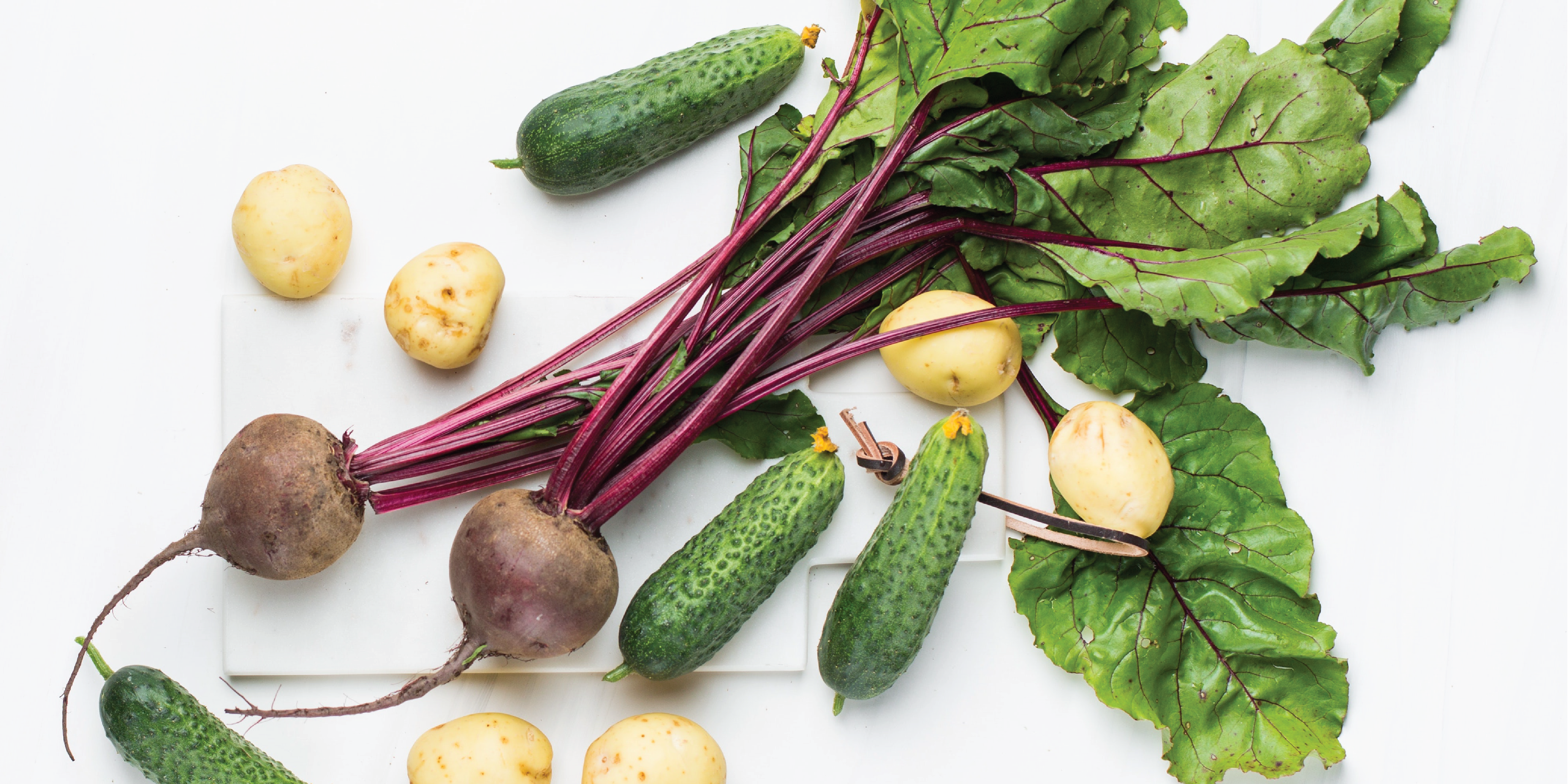I’ve received many questions asking how to know what fruits and vegetables are in season. I decided the best way to share this information was through a post – or better yet, a series of posts, one for each season! This post will be the first in the series, What’s in Season: Spring Edition.
What does eating seasonally mean?
To eat seasonally means you are eating foods (specifically produce) during their optimal growing time. In other words, eating foods based on their natural growing cycles. This could look like eating strawberries in June, or squash in Fall. I talk a bit about eating seasonally in this post from 2018, but I thought it would be nice to dedicate a whole post to the topic.

Does eating seasonally look the same everywhere?
It’s important to note that what is in season in one geographic location will be different than another. It varies greatly because of the local climate and topographic (i.e. land features) conditions. Blueberry season in Quebec occurs from mid-July to August, while in areas of B.C. the season can last from June until November. That’s why it’s important to know the local context!
Why eat seasonally?
There are many reasons that eating seasonally is good for the planet, including:
- Maximize nutrient availability: fresh foods grown during their optimal season taste better, and you maximize the number of nutrients you get from them. The deeper and more intense the colour, the more nutrients there are – and the colour of produce is most intense during its prime harvesting season!
- Promote diversity in your diet: a misconception is that eating seasonally reduces diversity in your diet, especially in winter. I would argue that eating seasonally provides more diversity to your diet than not eating seasonally, because you generally purchase the same items over and over from the grocery store. Seasonal eating means you’re always trying new things!
- Support your local farmers: farmers markets are bursting with fresh, seasonal produce. If you want to eat seasonally, the best way to do so is to visit your local farmers market: this is a great educational experience to learn what’s in season while supporting your local growers.
- Reduce your carbon footprint: by eating foods when it is their optimal growing season, your personal carbon footprint shrinks because foods do not have to be grown in energy-sucking greenhouses or transported long distances. You can help fight climate change in your personal life through this small step.
- Become a pro chef: eating by season prompts you to be creative in the kitchen by incorporating new ingredients you may not have tried otherwise.
Now that we know why eating seasonally is good for you and the planet, let’s look at what’s in season: Spring edition (mid-March to mid-June). I rely on the Ontario growing season for this post, but read until the end for growing guides in other provinces.

March – April
Fruits
- Rhubarb
- Strawberries (greenhouse)
- Tomatoes (greenhouse, year-round)
Vegetables
- Beets (March – June)
- Cabbage (year-round)
- Carrots (year-round)
- Cucumber (greenhouse, year-round)
- Lettuce (greenhouse)
- Mushrooms (March – June)
- Onions (red and yellow)
- Parsnips
- Peppers (greenhouse, year-round)
- Potatoes (March – June)
- Rutabaga (March – June)
- Squash
- Sweet potatoes (year-round)
May – June
Fruits
- Cherries (June)
- Strawberries (field, June)
Vegetables
- Asian greens (Bok Choy, June)
- Asparagus
- Beans (green/yellow, June)
- Broccoli (June)
- Cauliflower (June)
- Cucumber
- Herbs
- Kale
- Lettuce (field)
- Onions (green)
- Peas (June)
- Radishes
- Rhubarb
- Spinach
Additional Resources
For more information on produce availability, check out this page by Foodland Ontario. For those of you outside of Ontario, check out these availability guides:
- Alberta
- British Columbia
- Manitoba
- New Brunswick
- Newfoundland and Labrador
- Nova Scotia
- Prince Edward Island
- Saskatchewan
I couldn’t find any data for the northern territories, although I am not surprised by this. However, these regions DO have some rich agricultural opportunities, despite having to import much of their food. If anyone has resources about seasonality in the Northwest Territories, Nunavut or the Yukon, please share them in the comments!
Final Thoughts
I hope you enjoyed this post on What’s in Season: Spring Edition. I will continue this series in June, sharing all the amazing products available over the summer months.
If you liked this post, I encourage you to check these related ones that help you eat sustainably:
- The truth about farmers markets
- How to eat sustainably in the winter
- 5 easy, healthy and sustainable ways to eat well on a student budget
- What’s the deal with almond milk?
- Organic versus local foods: which are better?
As always, thank you for reading.
Until next time!







